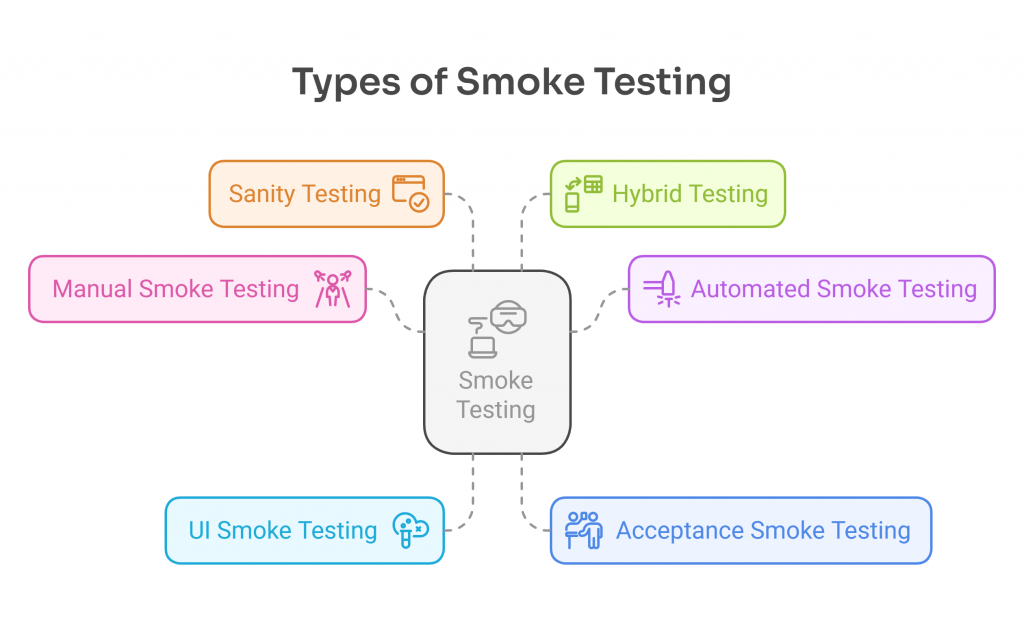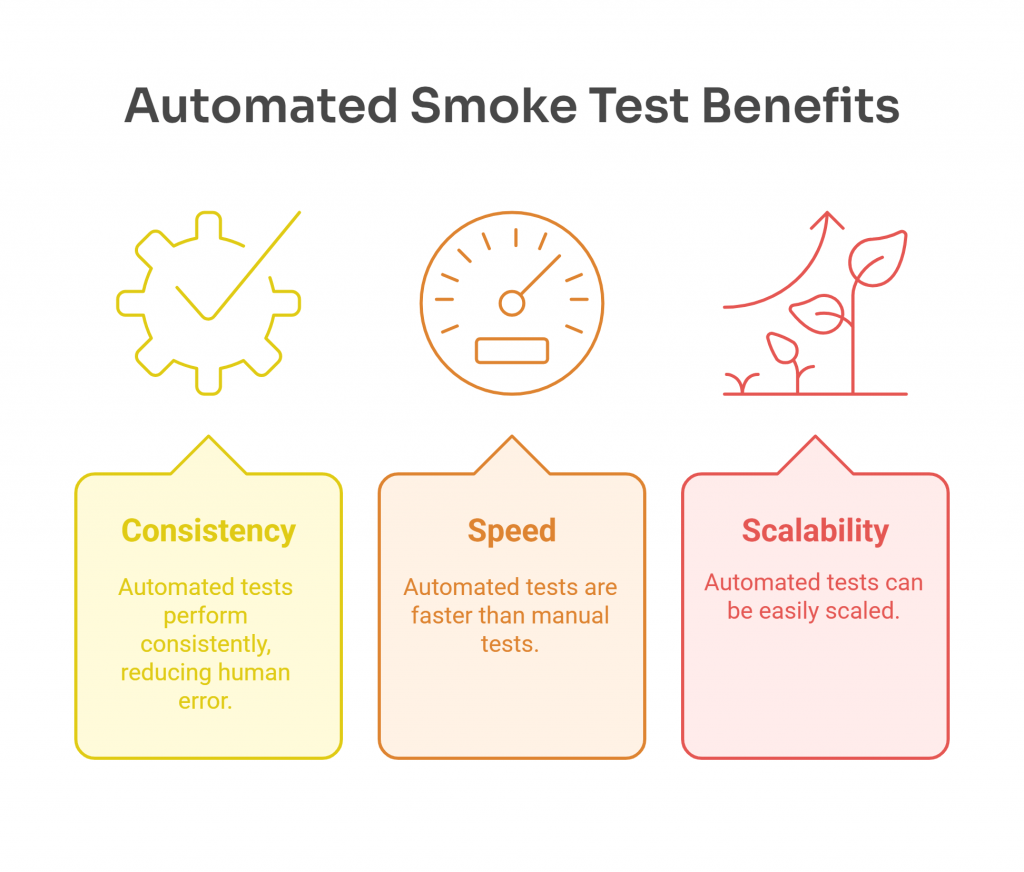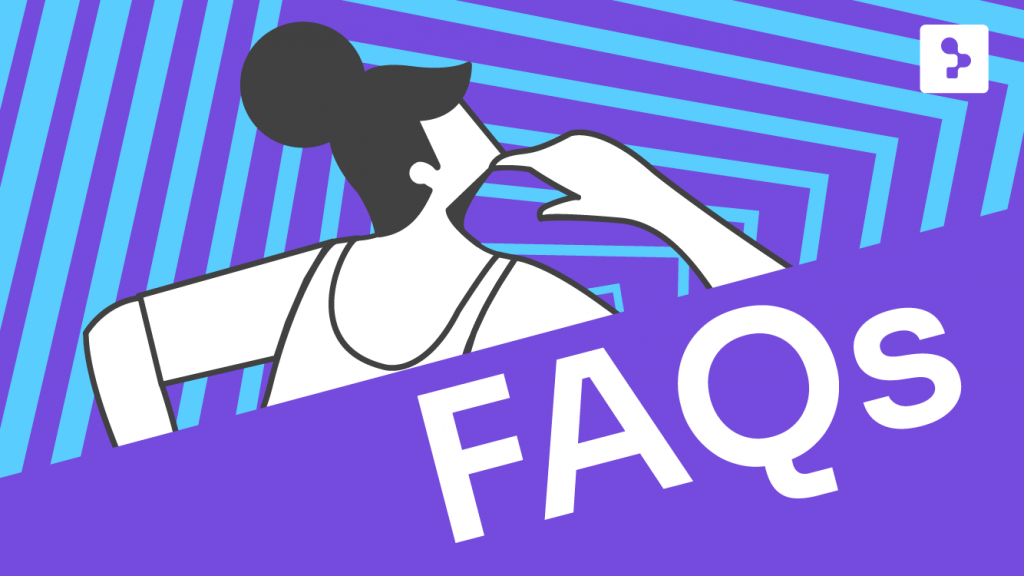Stop wasting time on unstable builds. Focus on what moves you forward! Use smoke testing to catch critical issues fast and keep your release flow stable.


Smoke testing is a critical step in the software development lifecycle, falling under the umbrella of functional testing. It serves as an initial check that the most critical functions of a software application are working correctly before performing more rigorous and comprehensive testing.
Why is this so important that we decided to write an entire article about it? By catching significant problems at the outset, teams can address them promptly, promoting a smoother and more efficient development cycle.
So let’s get down to it! In this article, we’ll delve into the intricacies of smoke testing to understand everything you need to know when it comes to quality.
Take a closer look at our case studies!
Enhance your software quality with our end-to-end software testing services!
What is Smoke Testing?


Smoke testing is a preliminary test to verify the basic functionality and critical features of a software build, enabling the critical features of the application to work correctly. Also known as “build verification testing,” this type of testing is essential for identifying major issues early in the development process, saving time and resources.
The smoke testing process is key to maintaining confidence in overall build stability. It involves a small number of test cases that can be executed quickly and provides a quick assessment of the build’s stability.
Advantages of Smoke Testing
- Early issue detection, reducing the risk of unstable builds moving forward.
- Faster validation cycles, since only core functions are tested initially.
- Resource efficiency, allowing teams to avoid running full test suites unnecessarily.
- Shared visibility, with consistent signals for developers, testers, and stakeholders.
- Stronger release quality, as problems are addressed closer to where they originate.
- Broad applicability, from UI and backend systems to embedded and hardware testing environments.
Core or Key Features in Smoke Testing
Smoke tests are designed to check whether the most important parts of your application work as expected. These core or key features must function correctly before any in depth testing can begin. That’s where an initial smoke test plays a vital role, as it helps identify whether a build is stable enough to proceed or needs attention.
Here are typical elements smoke testing focuses on:
- Authentication and login: Can users sign in and out successfully?
- Basic navigation: Do menus and main flows lead where they should?
- Database connectivity: Is the app able to read and write essential data?
- Critical APIs: Do key endpoints respond properly?
- UI load: Are vital interface elements visible and interactive?
By validating these areas early, you make it possible for each smoke test to pass only when it truly supports progress in your software development process. This quick form of verification testing protects teams from investing time in debugging builds that aren’t ready.
Types of Smoke Testing


Smoke testing can take different forms depending on your goals, systems, and workflow. These are the most common types and how they fit into various contexts:
- Manual smoke testing: Performed without automation, this method suits early-stage projects or builds that require subjective evaluation.
- Automated smoke testing: Used in continuous integration pipelines, it runs quickly and reliably after every build, reducing overhead.
- UI smoke testing: Focuses on checking that key interface components load, display, and respond properly—essential for frontend-intensive applications.
- Acceptance smoke testing: Executed after a deployment to check if the application is stable enough for stakeholder review or further testing.
- Sanity testing: Applied to specific areas after a change, this helps confirm that updates haven’t caused unexpected side effects.
- Hybrid testing: Combines manual and automated tests to adapt to different stages of the project or layers of the system.
Selecting the right type of smoke testing is only part of the equation. To get the most out of each run—and keep pace with modern delivery cycles—teams increasingly rely on automation. Let’s take a closer look at how automation strengthens the process.
Automation in Smoke Testing


Automating smoke tests can be a game-changer for your software development process. By leveraging automation tools, you can run these preliminary tests more frequently and consistently, catching critical issues as soon as they pop up. Not only does this save time, but it also frees up your team to focus on more detailed testing tasks.
Automation also promotes successful smoke testing by maintaining consistency and reliability, allowing the smoke tests focus to remain on critical functionalities.
Let’s share some of its major advantages:
Benefits of Automated Smoke Tests
- Consistency: Automated tests run the same checks in the same way every time, minimizing variation and helping teams reduce the risk of human error during repetitive tasks.
- Speed: These tests execute significantly faster than manual ones, providing almost immediate feedback after each build and keeping the development flow uninterrupted.
- Scalability: As systems grow, automated smoke tests can easily cover more scenarios without increasing effort, making them ideal for projects with frequent releases or complex architectures.
Finding The Right Balance
It’s important to note that not all smoke tests need to be automated. Some tests might be better suited for manual execution, especially if they require human judgment or are too complex to automate effectively.
As always, the key is to find the right balance, leveraging automation where it adds value, while keeping space for human insight when the context demands it. That helps teams stay efficient without compromising depth or quality.
To support this balance, and to make automation more effective when it’s the right fit, we’ll explore some of the most widely used tools and frameworks for automated smoke testing.
Tools and Frameworks for Automated Smoke Tests
There exist various smoke testing tools and frameworks that can help streamline test automation, making it easier to integrate smoke testing into your development pipeline.
Popular Tools for Automated Smoke Tests
- Selenium: A widely-used open-source tool for automating web applications.
- JUnit: A popular framework for unit testing in Java, which can also be used for smoke testing.
- TestNG: Another testing framework for Java, offering more advanced features than JUnit.
- Jenkins: A continuous integration tool that can automate the execution of smoke tests.
- Cucumber: Supports Behavior Driven Development (BDD) and automates smoke tests, especially for scenarios written in plain language.
- Appium: An open-source tool for automating mobile applications, useful for conducting smoke tests on mobile platforms.
- Postman: A popular tool for API testing that automates smoke tests for APIs, checking critical endpoints.
- Robot Framework: A generic open-source automation framework used for smoke testing across different platforms and technologies.
As we move forward, let’s discuss the integration of smoke testing into a CI/CD pipeline.
How Do You Perform Smoke Testing? Steps for CI/CD Integration


One of the most effective ways to leverage smoke testing is by integrating it into a Continuous Integration/Continuous Deployment (CI/CD) pipeline. This integration not only streamlines the testing process but also enhances the overall quality and reliability of the software.
During the early stages of the software development life cycle, development and testing teams collaborate to plan and write test cases from the very beginning. By catching issues early, the development team gets immediate feedback on code stability and deploys only stable builds.
Steps to Integrate Smoke Testing into CI/CD
1. Define Test Cases
Identify the critical functionalities that need to be tested. Focus on the core features that, if broken, would render the application unusable.
These test cases should include existing features that are essential for the application, fundamental UI elements, core workflows typically covered in system testing, and basic checks for API connectivity or user permissions.
2. Automate Tests
Use tools like Selenium or JUnit to automate the smoke tests. Make sure these tests are quick to execute and provide clear pass/fail results.
3. Configure CI/CD Pipeline
Set up your CI/CD tool (e.g., Jenkins) to execute the smoke tests after every build. Configure the pipeline to halt further stages if the smoke tests fail.
4. Monitor Results
Continuously monitor the results of the smoke tests to identify and address issues promptly. Use dashboards and alerts to keep the team informed about the test outcomes
As you can see, picking the right test cases is the foundation of integrating smoke testing into your CI/CD pipeline. Join us as we delve deeper!
Key Criteria for Selecting Smoke Test Cases
- Critical Functionality: Choose test cases that cover the most critical functionalities of the application.
- High Usage: Focus on features that are frequently used by end-users.
- Core Workflows: Include test cases that represent the core workflows of the application.
- Integration Points: Test cases that involve integration with other systems or components.
- Recent Changes: Prioritize test cases for features that have undergone recent changes or updates.
Examples of Smoke Test Cases
- Login Functionality: Verifying that users can log in and log out successfully.
- Data Entry: Validating if data can be entered and saved correctly.
- Navigation: Checking that users can navigate through the main sections of the application.
- Basic Transactions: Verifying that basic transactions (e.g., adding items to a cart) work as expected.
Selecting the right test cases for smoke testing verifies that the most critical aspects of the application are checked, providing confidence in the stability of the build.
Frequency: How Often Do You Need to Run Smoke Tests?


Determining the frequency of running smoke tests is crucial for maintaining the stability and quality of the software.
Factors Influencing the Frequency of Smoke Tests
- Development Cycle: Align smoke tests with the development cycle. For example, in an agile development process, run smoke tests after every sprint.
- Type of Testing: Adjust your smoke testing frequency based on the type of validation needed. For instance, acceptance smoke testing is typically executed after major updates or bug fixes to ensure overall system stability. Meanwhile, sanity testing verifies specific changes or fixes and may be used more selectively.
- Build Frequency: Match the frequency of smoke tests with the build schedule. For instance, if builds are generated daily, run smoke tests daily.
- Criticality of Application: Increase the frequency of smoke tests as the criticality of the application rises to maintain stability.
Best Practices for Running Smoke Tests
- Regular Schedule: Establish a regular schedule for running smoke tests, such as daily or after every build.
- Automated Execution: Automate the execution of smoke tests to maintain consistency and efficiency.
- Continuous Monitoring: Continuously monitor the results of smoke tests to identify and address issues promptly.
Running smoke tests regularly helps to verify that the most critical functionalities of the application are always checked, contributing to the overall quality and stability of the software.
As we conclude, let’s summarize the key takeaways from this article.
Key Takeaways


Smoke testing is a critical practice in software development, supporting the stability and quality of software builds. By understanding the key aspects of smoke testing, including its purpose, tools, integration into CI/CD pipelines, and best practices, you can implement an effective smoke testing strategy that enhances the overall quality of your software.
It stands out as a lightweight yet powerful software testing method for gaining early feedback and validating build stability.
FAQs about Smoke Testing in Software Testing


What Is a Smoke Test in Software Testing?
A smoke test is a preliminary check to determine whether the basic functionalities of a software build are working before proceeding with more in-depth testing. When teams perform smoke testing, it helps them to catch critical issues early by validating key workflows, enabling stability for further testing phases. That’s why smoke testing is a cornerstone of quality assurance.
How Does a Smoke Test Work?
A smoke test works by executing a set of predefined test cases that verify the basic functionality of the application. If the test passes, the build is stable enough for further testing, whether it involves manual smoke testing or automated smoke testing.
What Does a Smoke Test Tell You?
A smoke test indicates whether the most critical functionalities of the application are working as expected. This offers an early sign of the build’s stability before conducting more in-depth testing.
When Should You Run a Smoke Test?
Run smoke tests after every build to confirm that the most critical functionalities of the application are functioning correctly. For large applications, automating smoke tests is highly beneficial to maintain efficiency and consistency across builds.
What’s The Difference Between Smoke and Sanity Testing?
Smoke testing covers a broad range of basic functionalities, while sanity testing focuses on specific areas of the application to validate if particular issues have been resolved. Manual testing can sometimes be involved in these processes to confirm results.
What Is Smoke Testing vs Unit Testing?
Smoke testing checks the basic functionality of the entire application, while unit testing focuses on verifying the correctness of individual components or units of code.
What is The Difference Between Smoke Testing vs Regression Testing?
Smoke testing checks the basic functionality of the application, while regression testing validates recent changes that have not introduced new defects.
What is The Difference Between Smoke Testing and UAT Testing?
Smoke testing verifies the basic functionality of the application, while User Acceptance Testing (UAT) verifies that the application meets the requirements and expectations of the end-users.
What Are The Types of Smoke Testing?
The main types are manual, automated, UI, acceptance, sanity, and hybrid smoke testing. The best choice depends on your system, workflow, and testing maturity.
What Happens If a Smoke Test Fails?
If a smoke test fails, the build becomes unstable, and further testing stops. The team must address the issues before moving forward. This process helps teams act with confidence when smoke testing passes, allowing only stable builds to move on to more in-depth testing as part of confidence testing.
How We Can Help You
With nearly 2 decades of experience and a global presence, Abstracta is a leading technology solutions company with offices in the United States, Chile, Colombia, and Uruguay. We specialize in software development, AI-driven innovations & copilots, and end-to-end software testing services.
Our expertise spans across industries. We offer comprehensive smoke testing services to support the stability and quality of your software builds.
We believe that actively bonding ties propels us further. That’s why we’ve forged robust partnerships with industry leaders like Microsoft, Datadog, Tricentis, Perforce BlazeMeter, and Saucelabs, empowering us to incorporate cutting-edge technologies.
Our holistic approach enables us to support you across the entire software development life cycle.
Visit our solutions page and contact us to enhance your software quality
with our expert smoke testing services!


Follow us on Linkedin & X to be part of our community!
Recommended for You
API Performance Testing: Optimize Your User Experience
The Complete Guide to Software Testing Outsourcing
What is Functional Testing? Types, Strategies, and Automation
Tags In


Sofía Palamarchuk, Co-CEO at Abstracta
Related Posts
Scrum, a Paradigm Shift for Software Testing
From waterfall to agile methodologies. What are the differences between Scrum and other frameworks? How does it represent a paradigm shift in software testing and quality? Find it out in this article written by Gabriel Ledesma, Leadership Coach at Abstracta and co-founder of the agile…
What Is and Isn’t a Scrum Master?
Demystifying the role of the Scrum Master Scrum can be difficult to understand for those accustomed to more traditional software development processes. The lack of hierarchies, the possibility of the team having to manage itself, estimates with story points, etc are all new things that…
Search
Contents
Categories
- Acceptance testing
- Accessibility Testing
- AI
- API Testing
- Development
- DevOps
- Fintech
- Functional Software Testing
- Healthtech
- Mobile Testing
- Observability Testing
- Partners
- Performance Testing
- Press
- Quallity Engineering
- Security Testing
- Software Quality
- Software Testing
- Test Automation
- Testing Strategy
- Testing Tools
- Work Culture





